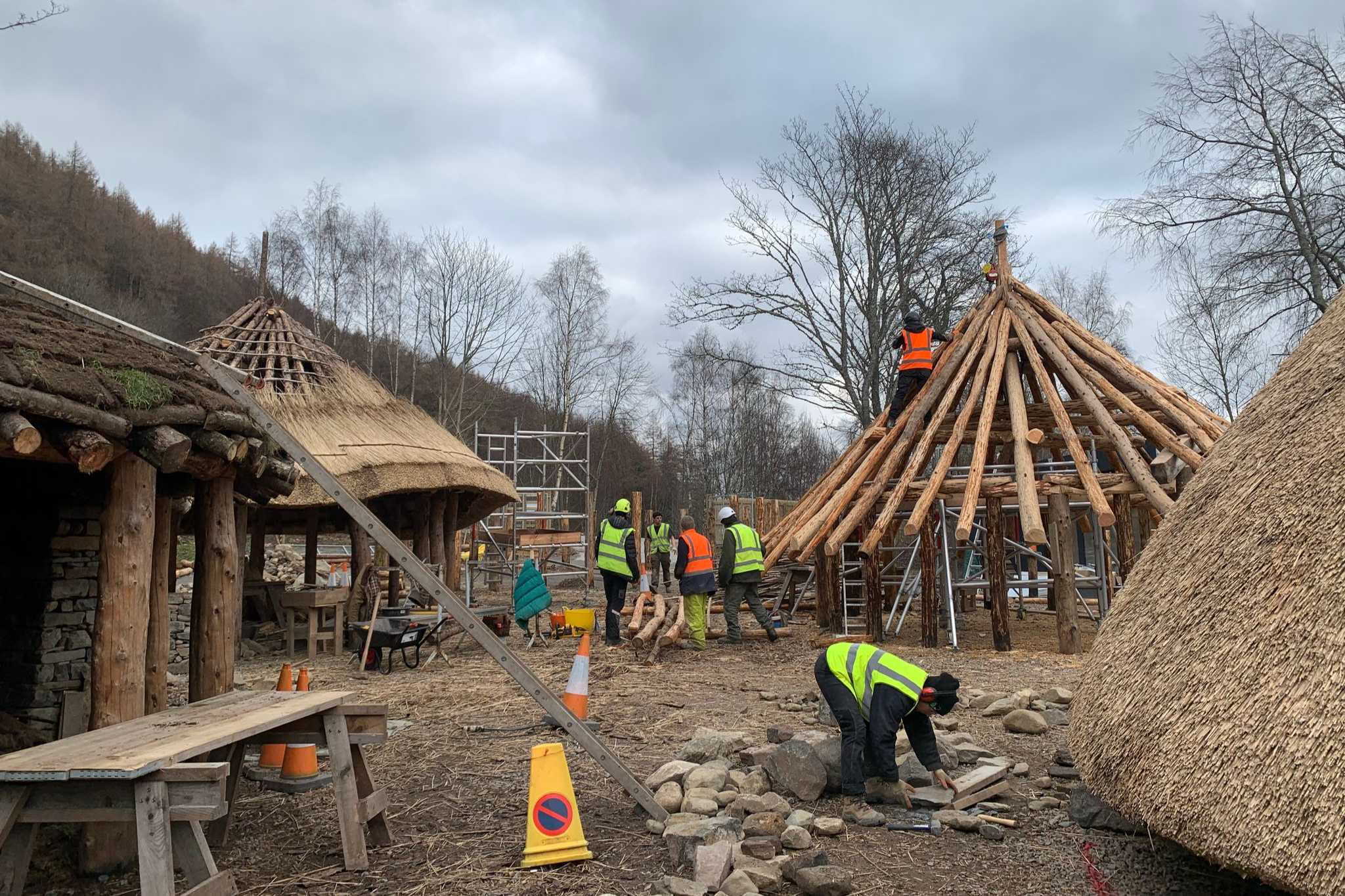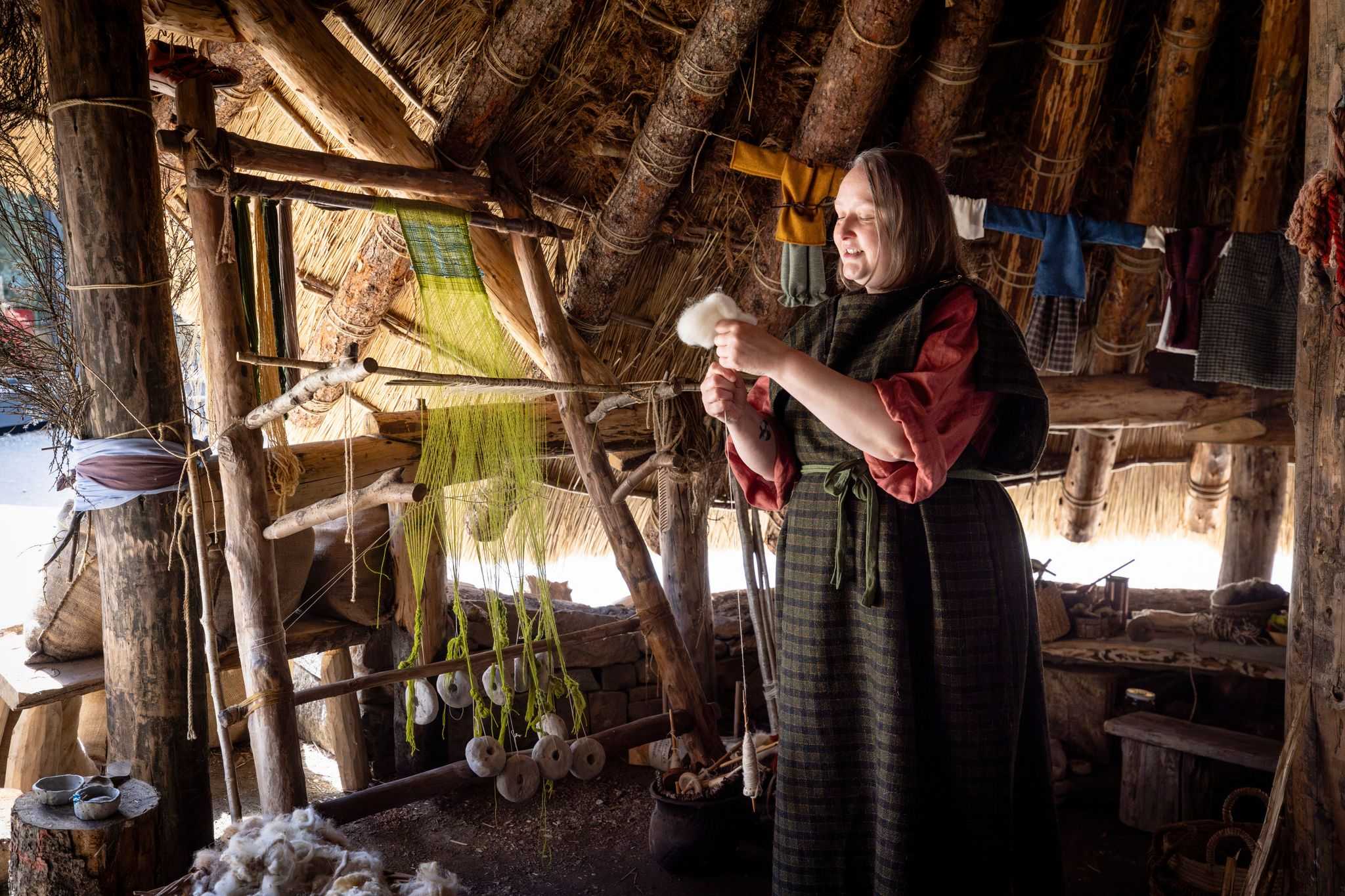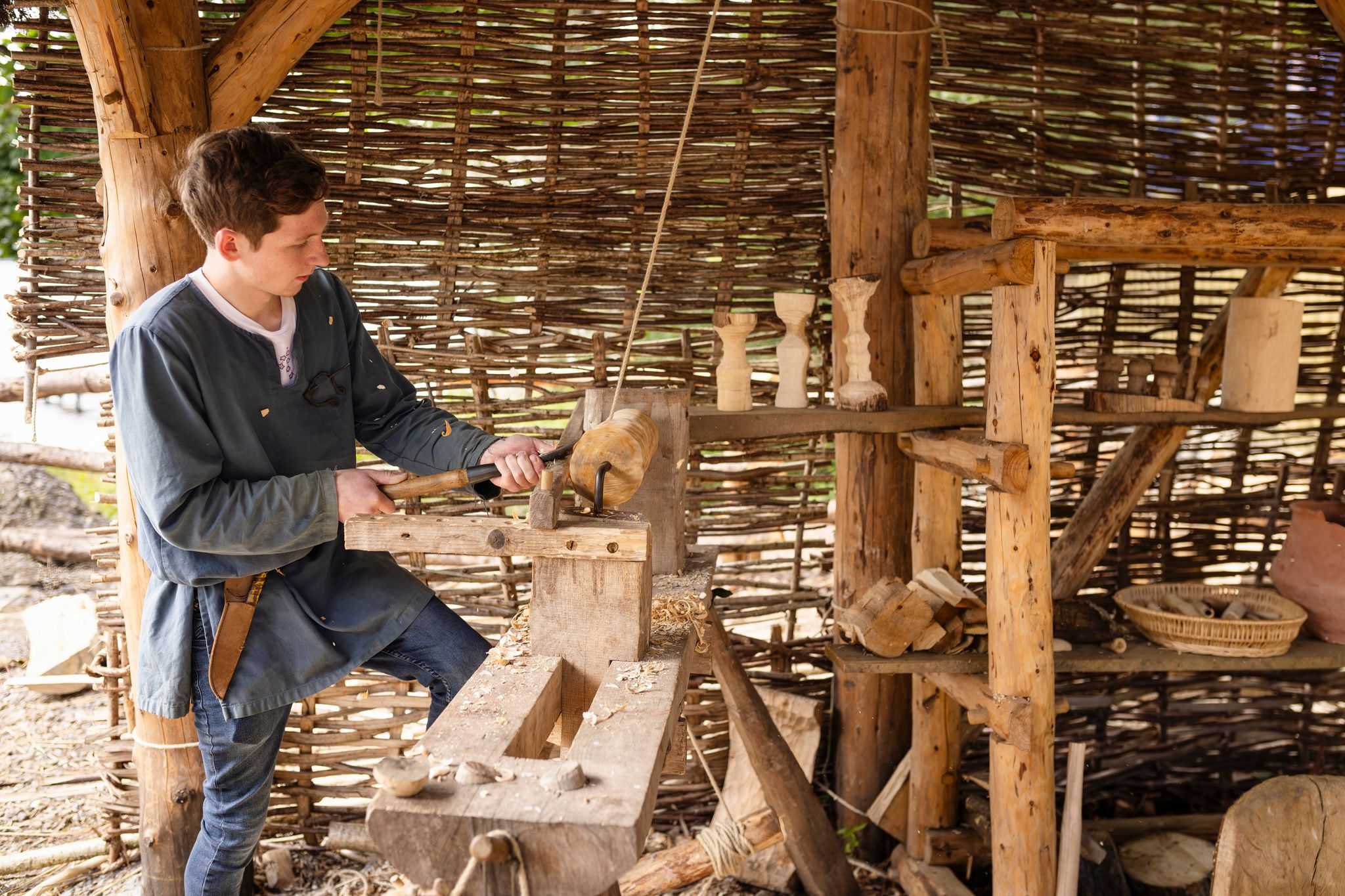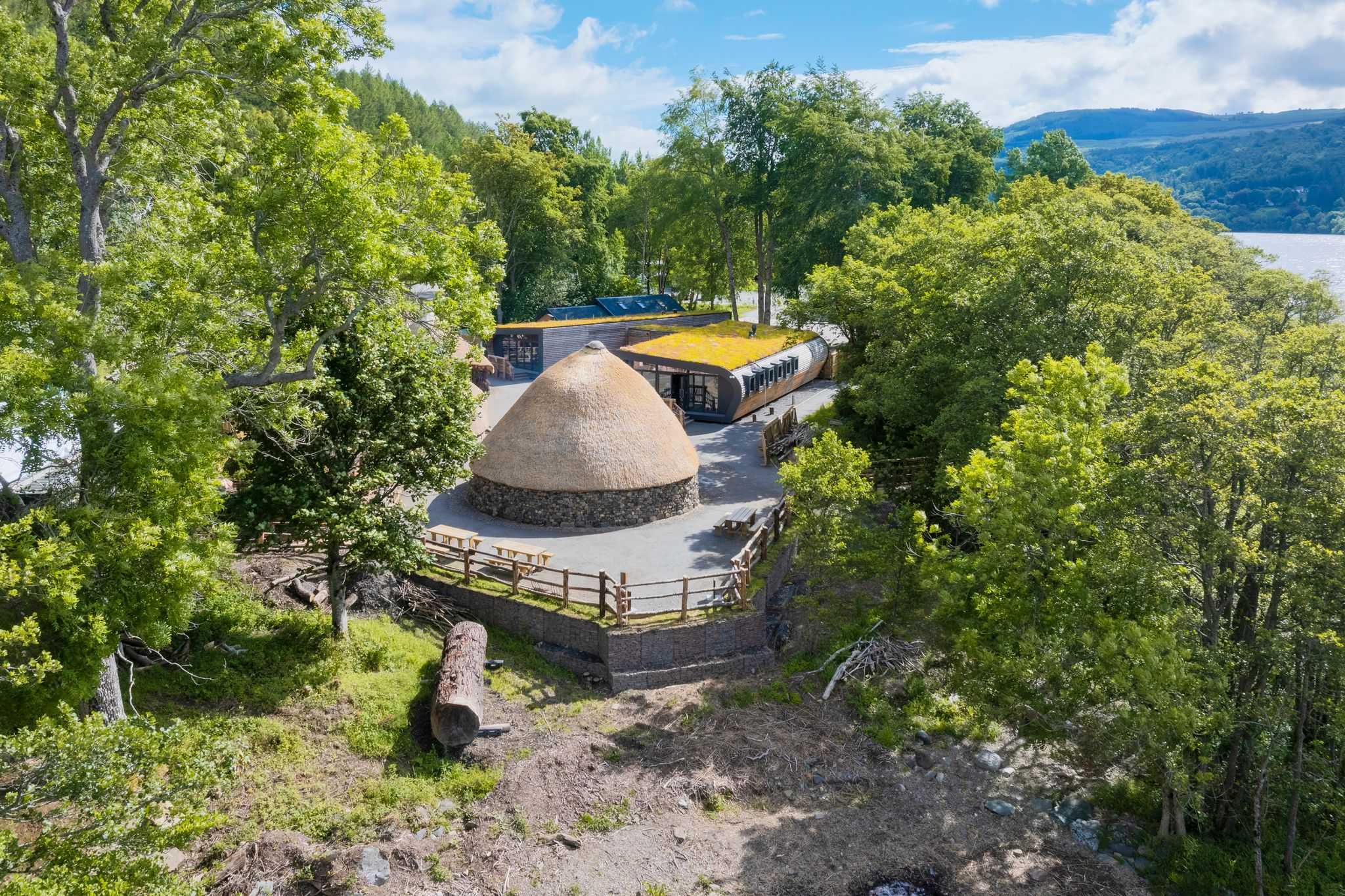
Working to build the redeveloped Centre
© The Scottish Crannog Centre
In 2021, a fire sadly destroyed the original reconstructed crannogs. But staff, volunteers and local craftspeople came together to rebuild and develop the centre into something even bigger than before. In less than three years, the Scottish Crannog Centre re-opened with a site 12 times the size of the original.
The museum collection - which was untouched by the fire - is now housed in a single storey building, next to a café and bookshop which all opens out into the main attraction: a living, working Iron Age village.
Mike told us how the fire started and within six minutes the crannog was gone. Luckily “with the wind blowing the right way onto the loch, the building nearby that housed our collection was not harmed.”
The team quickly started to receive calls and words of support and a local business set up a fundraising page. The staff rallied and they decided to re-open within a week.
Mike said: “We were unsure if anyone would want to come to a crannog museum without a crannog. But on the Friday as we opened people were queuing - our music night the following Monday sold out and we continued to do what we do best - tell the inspirational stories of the original crannog community around 500 BC.”
The Crannog Centre team had strong support from politicians and funders and were visited by the then Deputy First Minister John Swinney and Jenny Gilruth MSP. The team presented their plans and met with many of their community partners. “After their visit, we felt that we felt we were in with a real chance of succeeding”. In December 2021 Jenny Gilruth MSP announced in parliament a package of £2.3 million to help rebuild the centre.
"We said thank our lucky stars no one has been hurt, the collection and the personal belongings of the crannog dwellers survived and we would do exactly what the crannog dwellers would have done 2500 years ago...We would move!"
Developing the new site
Mike took this as an opportunity to establish a pathway to move and expand their offering. “Our new development team created a plan that would get us across to Dalerb as our new home - first we decided to build an Iron Age Village and flexible visitor centre and museum capable of being reconfigured.”
They pushed on with planning, and appointed a main contractor.
“We were so lucky to have the most amazing collection of incredible craftspeople join the team from thatchers and green woodworkers to stone builders. And we were had terrific support from volunteers! - we would open March 31st 2024.”



